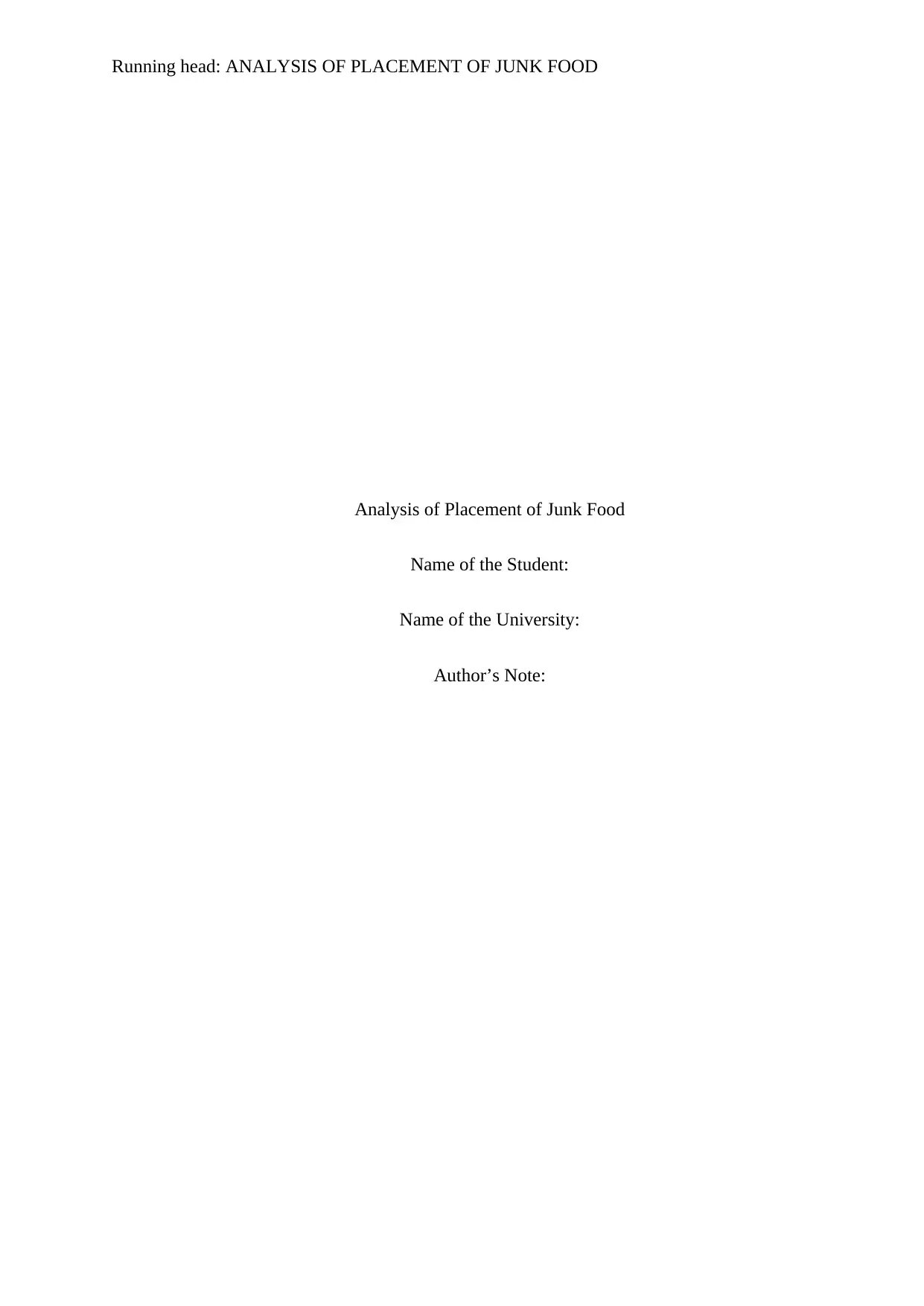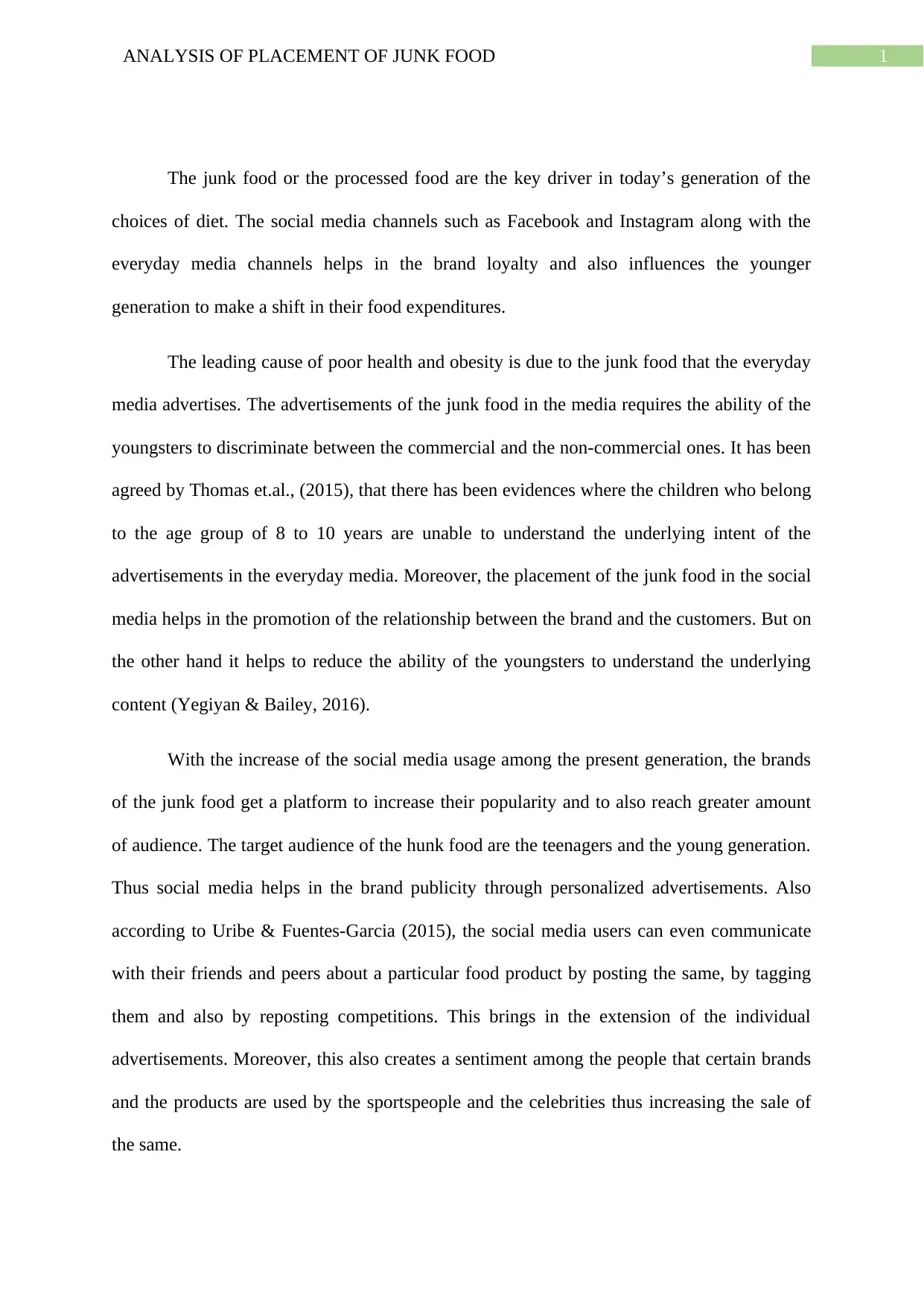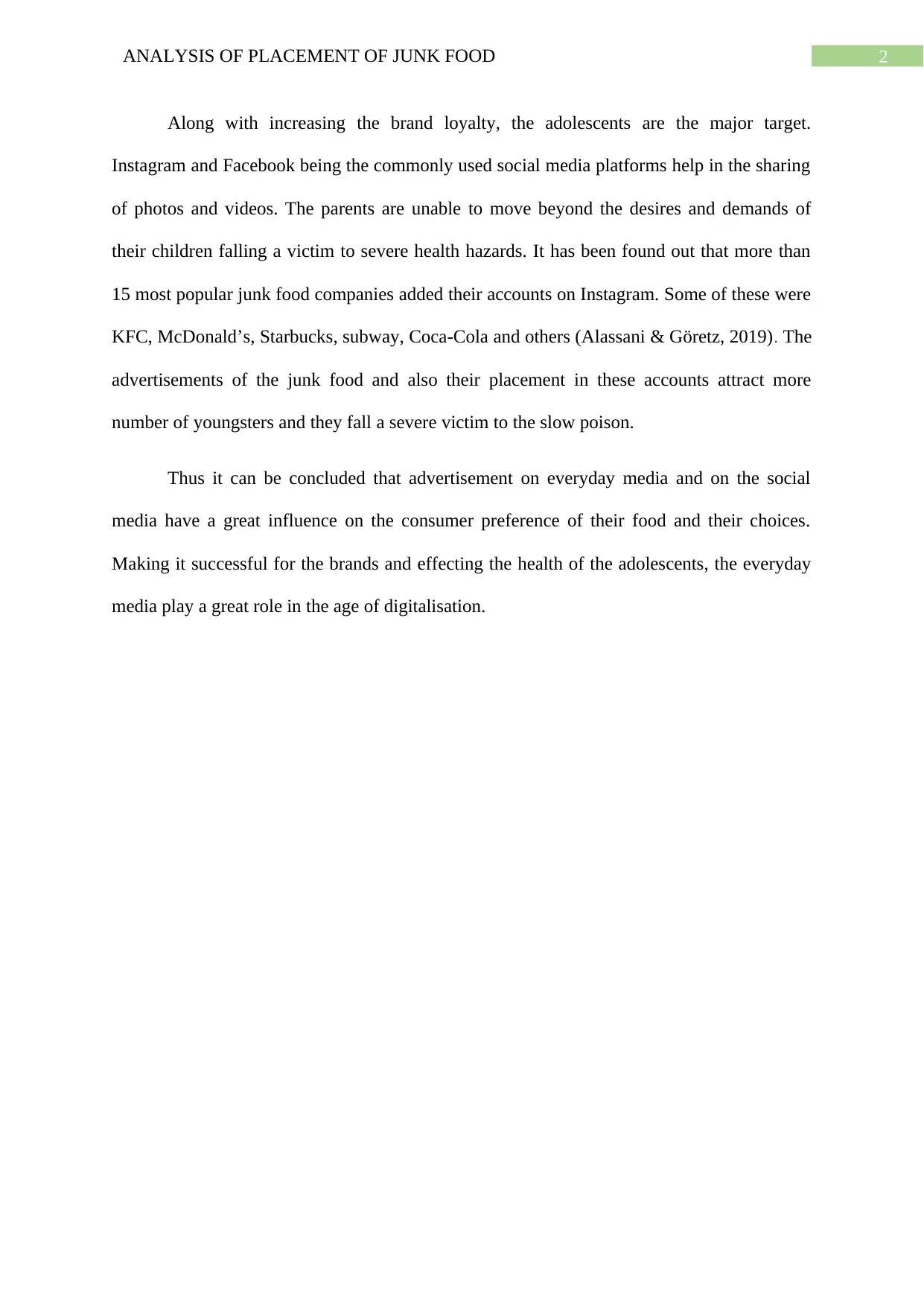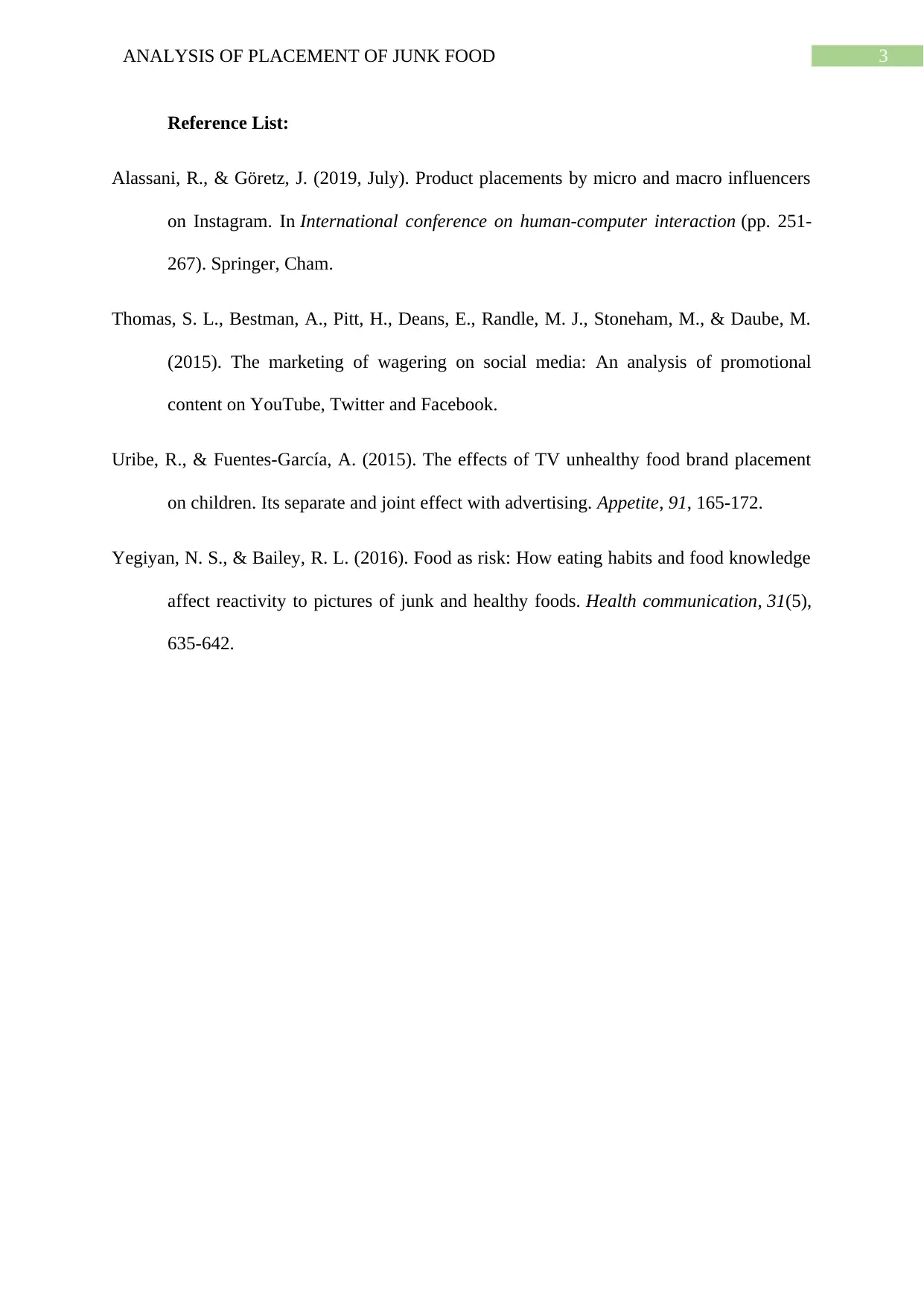Analysis of Junk Food Placement: Social Media's Impact on Adolescents
VerifiedAdded on 2022/08/21
|4
|756
|14
Report
AI Summary
This report analyzes the impact of junk food placement in media, including social media platforms like Facebook and Instagram, on consumer behavior, particularly among adolescents. It highlights how advertisements and brand placements influence food choices and brand loyalty, often leading to poor health outcomes. The report discusses the inability of younger audiences to discern the intent behind advertisements and how social media facilitates brand promotion through personalized advertisements, peer interactions, and celebrity endorsements. The study references various research papers to support the argument that media, especially in the digital age, plays a significant role in shaping consumer preferences, ultimately affecting the health of young individuals. The report concludes that advertisements on everyday media and on social media have a great influence on the consumer preference of their food and their choices.
1 out of 4










![[object Object]](/_next/static/media/star-bottom.7253800d.svg)